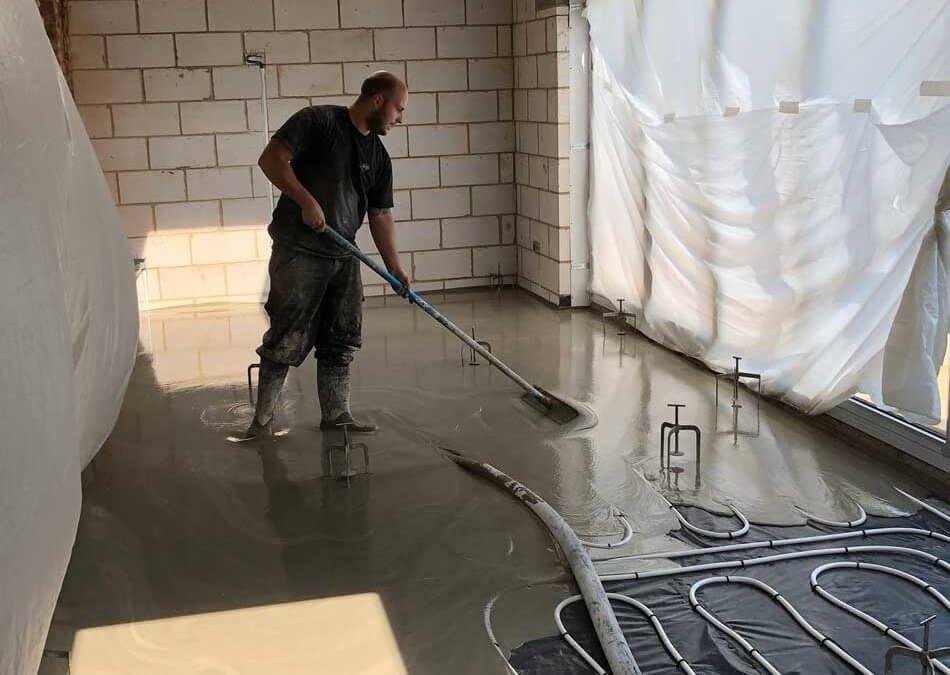Screeding is a crucial step in the flooring and construction industries that guarantees floors are level, strong, and prepared for final finishes. It is impossible to emphasise the significance of properly prepared subfloors in residential, commercial, or industrial constructions. Floor Screeding in Birmingham is the process of applying a well-mixed material to a smooth and level surface in preparation for the final floor finish.
Liquid screeding is becoming more and more popular among the various forms of screeding due to its excellent effectiveness and performance. Anyone working on building or renovating projects has to understand the importance of both traditional floor screeding and liquid screeding services.
The Function and Importance of Floor Screeds
Creating a Level Surface:
Levelling the floor in preparation for the application of final floor finishes like tiles, carpet, laminate, or hardwood is one of the main goals of floor screeding. These finishes may experience uneven wear, cracks, and other problems that affect the floor’s overall appearance and usefulness if there isn’t a level basis. Floor screeding makes ensuring the subfloor is absolutely level, giving a strong base for the chosen finish.
Providing Structural Integrity:
Another factor that supports the floor’s structural integrity is scraeding. By equally distributing weight throughout the floor’s surface, it lessens the possibility of cracks or other damage developing over time. This is particularly crucial in places with heavy traffic since they put a lot of strain on the floor. The endurance of the final floor surface can be enhanced by a well-executed screed layer, which reduces the possibility of underlying problems.
Thermal and Acoustic Insulation:
Floor screeding can improve a building’s acoustic and thermal qualities. Screeds can function as an insulating layer by adding particular materials or additives, increasing energy efficiency and lowering noise transmission between floors. This is especially helpful in multi-story structures, where energy efficiency and soundproofing are crucial factors.
Compatibility with Underfloor Heating Systems:
With the growing popularity of underfloor heating systems, screeds’ compatibility with these systems has become essential. The perfect medium for burying underfloor heating wires or pipes is provided by floor screeding, which guarantees effective heat dispersion across the whole floor surface. A more comfortable and energy-efficient living space is produced by the screed, which also makes sure that the heat is distributed uniformly. The heating elements are encased in a secure manner.
The Benefits of Thin-Screeding
Because of its sophisticated composition and simplicity of use, liquid screeding—also referred to as flowing screed—has completely changed the screeding procedure. It is favoured in many contemporary building projects due to its many advantages over conventional sand and cement screeds.
Self-Leveling Properties:
The self-leveling feature of liquid screeding is one of its biggest benefits. Liquid screeds flow freely and settle into an ideal smooth and level surface with little effort, in contrast to traditional screeds that need to be manually leveled. Time is saved, and a greater degree of precision is guaranteed, lowering the possibility of application errors.
Quicker Installation and Drying Times:
Compared to conventional techniques, Liquid Screed in Wolverhampton enables quicker installation. Large areas may be covered rapidly since the screed is simple to pour and spread, requiring less labour time. Furthermore, liquid screeds usually dry faster, allowing for an earlier application of the final floor finishes and a quicker construction schedule overall.
Improved Thermal Performance:
Because liquid screeds are so good at transferring heat, they are a great option for use with underfloor heating systems. Their capacity to completely enclose heating wires or pipes guarantees the best possible heat transfer, which reduces warm-up times and increases uniform heating across the floor. Throughout the building’s life, this enhanced thermal performance may lead to significant energy savings.
Decreased Weight and Thickness:
Liquid screeds are lighter and thinner than traditional screeds, however, they still have the same strength and endurance. This decreased thickness lowers the overall weight of the screed layer in addition to saving money on materials.
Minimal Cracking and Shrinkage:
Liquid screeds are designed to minimise cracking by shrinking as little as possible during the drying process. This is especially crucial to preserving the floor’s integrity over time. Because there is a lower chance of cracking, there is also a lower chance of flaws or damage from subfloor movement affecting the floor finish.
Environmental Benefits:
Compared to traditional screeding techniques, liquid screeding is frequently more environmentally benign. The production of the materials used in liquid screeds usually requires less energy, and waste is decreased by the application process’s efficiency.



More Stories
Advantages of Using Virtual Offices for GST Registration
Double Soap Dish: Space-Saving Bathroom Solution
Why Custom Printed Freezer Paper is the Secret Ingredient for Your Food Storage Needs?